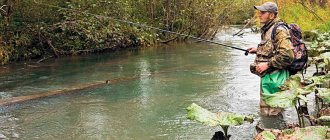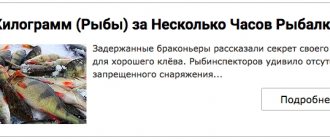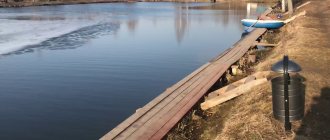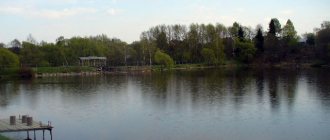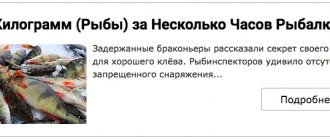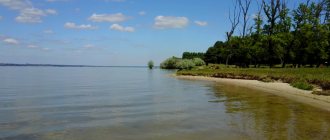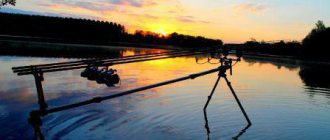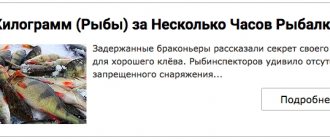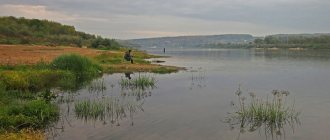Climate
Since the Ural Mountains are located at the junction of two plains, the climate in the east and west is very different. If in the west the atmosphere is continental and quite soft due to the air masses brought from the East European Plain, then in the west it is primarily due to the Ural Mountains.
Much less precipitation falls and serves as a barrier to light darkness, and the change of seasons is felt much more strongly, which indicates a strong or even severe continental climate.
Also, the amount of precipitation varies greatly in the south and north of the Urals. The Arctic Ocean significantly softens the climate and contributes to good maintenance of humidity in the north, in contrast to the south of the Urals, where the semi-desert and desert climate of Kazakhstan is more influential.
Location of reservoirs
Due to the geographical and climatic features of the area, it is quite logical to conclude that the most productive fishing in general is in the north and north-west of the Urals, where there is a milder climate and sufficient humidity and a balanced temperature regime necessary for the progressive growth of fish.
However, in the south there are many anthropological reservoirs in the form of ponds and reservoirs, where, due to imported fish, while maintaining the necessary water quality conditions, you can catch very valuable and large trophies.
Predator Hunt
In the Subpolar Urals, hunting for large predators in the form of pikes and perches is most effective, since they have all the conditions for reproduction here: good nutrition, small temperature fluctuations, distance from many populated areas.
I would especially like to highlight the Lyapin River, where, with due diligence, you can not only enjoy a good bite, but also catch fishing trophies and add them to your collection. In addition to pike, the river also contains perches and ides, which are often caught when fishing with a spinning rod. The most common metal spoons are suitable as bait for large predators. You can even trace a pattern on the river - the more complex and sophisticated the fishing method, the less opportunity to catch trophy specimens.
Staroutkinsky Pond, located in the Sverdlovsk region, is also considered an equally catchy place for catching predators, where you are given access to fishing for a small fee. Fishing competitions are often held at this pond, where you can compete with rivals in the level of fishing skill.
What kind of fish is caught on the Ural River
There are especially many predatory fish in the Urals, most of them are made up of the following species:
- Chub.
- Asp.
- Perch.
- Pike.
- Som.
- Ide.
It is preferable to fish with a spinning rod, but you also need to take at least one bottom and float gear with you. Several reasons explain this, such as fish activity in the early morning or late evening. For a constant catch, when the fish stop biting in water bodies, catch a small amount of bleak.
We cut the fish that we caught into small pieces for mounting on bottom tackle. This bait performs well when catching chub. However, situations in which there is virtually no bite cannot be ruled out. In this case, fishing from a boat will be an excellent solution, since the fish prefers secluded places in the form of snags and pitfalls, and such places are unlikely to be reached from the shore.
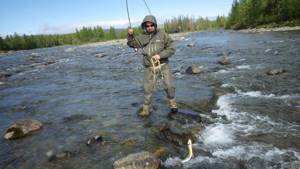
Now the question is what to fish with. Chub ide and asp are excellently caught on a spinner; here, the larger the size of the bait, the larger the fish and the less bite there will be. Chub and asp are those fish that prefer exclusively windy weather and fast river flows. Ide and perch have a different behavior pattern, the bite of which is possible only in extremely calm weather.
Pike, as the most common predator, is caught using live bait and lures. Most often, pike can be found in the habitat of crucian carp, since it is its main food. The tributaries of the Ural River have a large channel, the one that flows into the Urals brings with it a lot of fish. The most exciting fishing is for catfish.
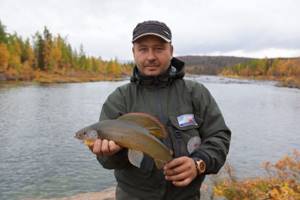
The bite mainly occurs at night, and fishing gives the best results when using girders and bottom fishing rods. This fish grows to 50 kilograms and is the largest in this river. Catfish are caught using dung beetle larvae. The length of the Ural River is quite long, so you can find suitable places for fishing.
Silent white prey
There are more than enough white fish in the reservoirs of the Urals, especially the polar ones, but this does not stop ambitious fishermen from hunting for them. Here are the most frequently visited fishing spots where you can catch your record fish, for example: Isetskoye Reservoir, Lake Uelgi, Reftinskoye artificial sea, Beloyarskoye artificial sea, Karaguz reservoir.
Here, for a small entrance fee, you can not only catch your coveted trophy of white fish or catch whole bags of fish, but also have a good rest, compete in fishing and simply take part in fishing competitions while participating in fishing festivals.
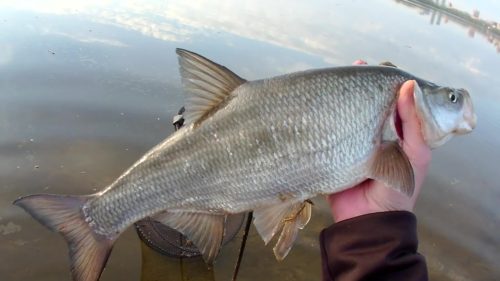
As a rule, fishing in such reservoirs from a boat is allowed only in the summer, but if you have a strong desire and opportunity, you can also go fishing by boat. On Lake Uelgi and the Iset Reservoir.
Prey – “MEGA PIKE”
Our fishing tours are always designed in such a way as to get to the most interesting places with maximum savings of effort and time. The duration of the tour can be changed by prior arrangement. In addition, the fishing tours always require the presence of an experienced captain who knows several places with excellent bite to which he can take you. This way, every day you can fish in a new “cool” place without going far from your “base”. Accommodation at the “base”: Our fishing tours are always conducted in well-equipped conditions!
1. Fishing tour - fishing on the Northern Sosva River - ALL INCLUSIVE - duration 7 days. The tour is ALL INCLUSIVE (accommodation, transfer, meals, boats + gasoline; no additional charges)
FLOAT-BASE Natalena (base photo, ) - a ship for a company of up to 8 people - kitchen-dining room; — two 4-berth cabins (each has a DVD and TV, take your favorite movies and music with you); — large deck for walking; - bathhouse; - toilet; — chest freezer (for storing food, trophies); — Tour cost: 320,000 rubles (with a full group of 8 people — 40,000 rubles per person); — Advance payment: 40,000 rubles; — Full payment: 280,000 rubles on the first day of the tour when the base departs from the port; Time layout and route: The entire tour, including the road to the place, is designed for 7 days. At the same time, the journey to the place will take one day in one direction (with sufficient water level up to 70 km, with low water level - up to 40 km). A total of five days of fishing and relaxation! The tour involves changing fishing spots and parking spots - at the discretion of the captain.
2. Fishing tour - fishing on the Northern Sosva River - ECONOMY - duration from 4 days. The tour is carried out according to the ECONOMY principle (accommodation only; boats and gasoline are paid separately, meals are not provided)
Floating Base Natalena - Tour cost: 25,000 rubles per day, minimum 4 days, maximum 8 people; — Prepayment: 10% of the total cost. — Full payment: on the first day of the tour upon departure from the port;
Approximate calculation of an ECONOMY tour for a company of 8 people for 5 days: base rental 25,000 rubles. x 5 days, boat rental 3000 rub. x 3 days x 4 boats (based on 1 boat for 2 people) = 161,000 rubles (20,125 rubles per person). Meals are not provided, fuel and lubricants for boats are paid additionally.
Time layout and route: The entire tour, including the road to the place, is designed for a period of 4 days. At the same time, the road to the place will take one day in one direction (with sufficient water level up to 70 km, with low water level - up to 40 km). The tour involves changing fishing spots and parking spots - at the discretion of the captain. You choose the number of days of the tour yourself.
3. Fishing tour - fishing on the Lyapin River - ALL INCLUSIVE - duration 10 days. The tour is conducted on an ALL INCLUSIVE basis (accommodation, transfer, meals, boats + gasoline; no additional payments) Natalena floating base - Tour cost: 400,000 rubles (for a full group of 8 people - 50,000 rubles per person); — Advance payment: 80,000 rubles; — Full payment: 320,000 rubles on the first day of the tour when the base departs from the port;
Time layout and route: The tour lasts 10 days. At this time, the road to the fishing spot is also included, which takes two and a half daylight hours one way (about 300 km). As a result, you get five days of interesting fishing! The route involves changing fishing spots within the accessibility of the base, and parking places are at the discretion of the captain.
In case of cancellation of the tour, the prepayment is refunded in full, provided the cancellation is made in advance when the tour organizer has sufficient time to recruit a new group, otherwise the prepayment is not refunded.
Bait for catching whitefish
It differs from different reservoirs in different ways, but the most important element of catching large snow-white fish is considered to be complementary food, which, depending on the place of fishing, can have its own consistency and allows you to attract the main fish of the reservoir, which is most effective when fishing on the shore.
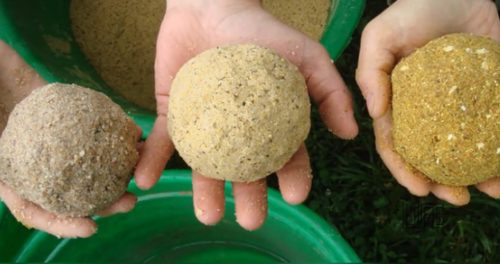
Just like groundbait, bait has a very important role in a good fishing outcome, and depending on the type of fish, your own bait can be used, but no one has canceled the universal earthworm.
Grayling
The first meeting with grayling took place in a mountain rapid. Following the caught char, a large grayling came out on a Goddard Sage black fly. The exit ended with a vicious bite with a self-hook and ten minutes of struggle. The first grayling we came across was the largest of the trip. The one and a half kilogram fish had violet fins and an ultramarine lateral line. Unfortunately, she took the bait too deep. The next meeting with grayling took place in the foothills. Seeing from the trail a relatively shallow riffle after the rift, I went down to the river and approached it from below through the water. Casting into the return line near the drain did not show any fish. And the first splashdown of the fly on the main stream provoked the release of a large grayling. The fish rose to the surface, nervously hovered under the fly for a few seconds, hesitantly touched the bait with its nose and suddenly greedily grabbed it. I automatically pulled the cord. After some time, the grayling stopped shaking its head wildly and tried to sink to the bottom. Having pulled the fish out of the main stream full of stones, I moved the party into a more peaceful direction. We didn't last long there. The fly fishing tackle signaled that the opponent was going to the candle. In a clear stream, the fish could not cling to the stone and chose a different tactic. Having made a jerk to the surface against the current, the grayling shook and soared high above the surface of the water 3 m from me. Having fallen, the fish expressed such a desire for life with unimaginable somersaults that this decided its fate. Not understanding my intentions, the grayling was given into my hands only after it was completely exhausted. What followed was a quick photo (how beautiful) and a long resuscitation, which was successful.
Read: Narva Bay
